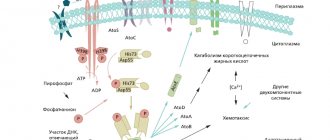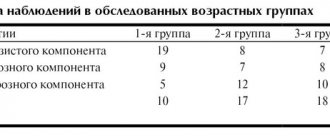Traumatologist is one of the oldest medical specializations. Its main task is to help patients who have encountered injuries in everyday life or while performing professional tasks.
In addition to the traditional treatment of musculoskeletal injuries, this doctor’s competence also includes assistance with frostbite and burns of any nature and area of damage. Depending on the cause and degree of damage, all citizens coming to see him are divided into two groups: planned and emergency.
The first category, in the event of emergency situations, can “be patient”, skipping in line those who were brought in after accidents or falls from a height. If the victim requires immediate hospitalization, he is taken by ambulance to the inpatient department and immediately sent to the operating room.
There, a traumatologist and surgeon get down to business. Their well-coordinated collective work allows not only to save the life of the victim, but also to guarantee the restoration of a good quality of life in the future under favorable circumstances.
What does a traumatologist treat?
The work of a traumatologist has a direct connection with surgeons, radiologists, orthopedists, and transplantologists.
Modern lifestyle, little physical activity and sedentary work cause various complications in the functioning of the musculoskeletal system in people. This is what makes traumatology so in demand.
Doctors in this field study and treat the following types of problems:
- curvature of the spine and feet,
- osteoporosis,
- joint problems,
- flat feet,
- osteomyelitis,
- sprains and tears,
- neoplasms in bone structures,
- dislocations,
- bruises.
Reasons for admission
Each patient independently decides whether he should be treated by a paid doctor or whether he can limit himself to the services of an expert from a state clinic. Regardless of who was preferred, the reasons for visiting the expert’s office remain identical.
First of all, we are talking about getting injured, up to a simple bruise. The latter option can hide many dangers, including:
- dislocation;
- fracture;
- rupture of articular ligaments.
With all of the above, immediate assistance is required, so you should contact the medical center immediately after the incident. Otherwise, the patient will experience the following negative symptoms over the next few hours:
- pain syndrome;
- redness of the skin;
- swelling;
- stiffness.
The alarm should also be sounded in case of fractures. Moreover, they are not always visible immediately, since fractures can be closed or open. The first variation has a lot of complications that arise due to the inattention of the victim. Due to the fact that it is quite problematic to diagnose closed fractures on their own, people put off visiting a traumatologist until the last minute.
The aces recommend going to the hospital immediately, and in case of acute pain, calling a doctor at home. This is especially true for situations with closed injuries, which may turn out to be more significant than they seem. Their characteristic signs are increasing pain and swelling of the skin at the site of the suspected fracture.
With an open fracture, everything is much simpler, because when you see blood and an open wound, it immediately becomes clear that you cannot delay calling an ambulance. If you try to settle everything on your own, then in the future this may lead to improper fusion of bone tissue. This will provoke various associated inconveniences, which will have to be corrected surgically - breaking the bone again and applying the correct splints.
Injuries to the brain, spinal cord and spine are particularly serious injuries. Seconds count here.
If the patient is concerned about suspicions regarding possible abnormalities of a chronic or hereditary nature, then the emergency appointment can be postponed by making an appointment for a scheduled examination. This can also be done through the official website if you have chosen service in a private medical institution. Such a clinic provides consultations on a paid basis, but does not require any additional payments for consultation.
You should check the health of your bones and joints if you experience at least a few of the following symptoms:
- lameness;
- aching type pain in the back or limbs;
- restriction of joint activity;
- joint deformities or swelling;
- growths on bones.
But even without this, if you want to undergo a preventive examination, no one will forbid someone who cares about their health to get checked.
Narrow specializations
If we talk about narrower areas of a specialist’s activity, the following types of activities can be distinguished:
- pediatric traumatology (patients under 18 years of age),
- injuries resulting from sports activities,
- prosthetics,
- surgery for bone tumors,
- elimination of problems of the spinal column,
- elimination of injuries inside joints,
- treatment of burns,
- hand surgeries,
- military traumatology.
Complete training
The Interregional Academy of Industrial and Construction Complex (MASPK) invites students to take advanced training courses in the field of Traumatology.
The Academy's resources make it possible to remotely train thousands of specialists from all regions of Russia. Our training programs are compiled with the participation of leading experts in their field and are regularly updated, which allows our graduates to successfully implement themselves in the profession. The Interregional Academy of Additional Professional Education (MADPO) conducts regular enrollment in courses of additional professional education in the specialty “Traumatology and Orthopedics”. We offer advanced training programs in a distance format according to an individually agreed schedule, a modern educational and methodological base and standard documents upon completion of training. Training in the Traumatology program at the Medical University of Innovation and Development (MUIR) is a modern educational program for medical specialists that allows you to complete training in the shortest possible time and without interruption from work. The University's courses are delivered both part-time and distance learning and fully comply with both educational and professional standards in the field of additional vocational education (additional vocational education). The National Academy of Modern Technologies (NAST) implements additional education programs and invites specialists to undergo professional retraining in the field of Traumatology. The Academy's training programs involve the use of distance technologies, which allows our students to receive education without interruption from their main activities in the most comfortable mode. The career guidance center for medical personnel of higher and middle management MEDICALEDU invites you to undergo training in the specialty “Traumatologist”. Timely receipt of additional professional education allows you to timely pass certification events and continuously improve in your profession. The training format for advanced training courses is distance learning. Author of the article
Yurkin Alexey
Who is the profession suitable for?
Specialists who have received a higher medical education can become a traumatologist. In addition, you must have a valid certificate in “Traumatology”, indicating completion of the necessary training.
In addition to traditional skills and abilities, the doctor must be proficient in dressings, immobilization, blockade and be able to conduct programs on VHI and compulsory medical insurance.
The profession of a traumatologist requires responsibility, attentiveness, excellent coordination of movements, high intellectual abilities and an analytical mind from a specialist.
Reception algorithm
Whether it is the chief traumatologist of the department, or an ordinary “yesterday’s student” of a medical university, the algorithm for admitting planned patients remains identical.
First, an initial consultation is carried out. During it, the applicant talks about the accumulated thematic complaints, shows a medical card and mentions whether he has a hereditary predisposition corresponding to the suspicions.
This is followed by a traditional external inspection. Usually it is not enough even if the traumatologist has extensive experience. To refute or confirm the guesses, you will need to undergo additional clinical studies:
- x-rays;
- MRI;
- CT scan in case of suspected traumatic brain injury;
- general blood test to identify hidden inflammatory processes.
Those suspected of having osteoporosis undergo bone density testing. In medical terminology, the procedure is called densitometry.
Patients who are admitted from the street and are considered urgent are usually immediately sent either to the emergency room or intensive care unit. Particularly long queues at the trampoline can be seen in winter, when there is ice. During this time, elderly residents who are at particular risk should be vigilant. Their bone tissue recovers more slowly than that of young people.
Modern orthopedic treatment
In orthopedics, conservative and surgical treatment methods are used.
Before choosing one or another technique, the specialist conducts diagnostics. It includes ultrasound, CT, MRI, electromyography.
Physiotherapy, manual therapy, and massage are also used in orthopedics.
The use of special plaster casts and foot abduction devices for deformities of the extremities is constantly being introduced into medical practice. If all medical prescriptions are followed and corrective mechanisms are used, the orthopedic defect is completely eliminated.
Traction is one of the methods for treating lower limb deformities. It is extremely important to detect signs of the disease as early as possible. In early childhood, such pathologies can be easily corrected and can disappear without a pronounced cosmetic defect or problems with self-esteem in the future.
Specialists also use Ilizarov or Taylor methods and perform osteosynthesis.
Consultation stages
Patients who are able to move independently come to see a traumatologist at the clinic. For patients who cannot come for a consultation on their own, a traumatologist can come to their home, and patients with serious injuries are taken to an emergency room or to a hospital department.
Initial consultation with a traumatologist includes:
- studying the patient’s complaints and clarifying the medical history (when the complaints appeared, what provokes the pain, etc.);
- study of family history, since a fracture may be a consequence of certain hereditary diseases;
- an examination that involves palpating the affected area and checking the functionality of the injured limb;
- appointment of laboratory and instrumental diagnostics.
FAQ
- What should you take with you to an orthopedic appointment?
If you have results from previous examinations, such as ultrasound, x-rays or MRI, be sure to bring them with you. This will help the orthopedist make a diagnosis and select the necessary treatment. If you have not undergone any examination, if necessary, you can undergo it with us.
- How can a doctor help me with knee pain?
Our orthopedic doctors use more than 20 treatment methods in their practice. From drug therapy and blockades that help quickly relieve pain, to physiotherapy and intra-articular injections that help restore the joint.
- Is it possible to undergo treatment with you without surgery?
We use non-surgical treatment methods, which allows us to avoid surgery in the treatment of certain diseases.
- Can all prescribed treatment be completed with you?
Yes, we have all treatment methods and all equipment. Moreover, you can start treatment on the first day of contacting us.
- How painful is it to get an injection into the knee joint?
The procedure is performed under local anesthesia; you only feel the injection of needles into the skin. The whole procedure takes no more than 5 minutes. You can easily get up and go. There are no serious restrictions.
Research methods in traumatology and orthopedics
Diagnostics is the first and most important stage in the process of restoring human health. The feasibility and effectiveness of all subsequent actions largely depends on its reliability and accuracy: prescribing drug therapy, physiotherapeutic or surgical treatment.
Medical science does not stand still. Every year, methods for diagnosing diseases become more and more high-tech, new techniques appear, diagnostic equipment becomes more complex, thereby becoming more accurate and of higher quality. But at the same time, becoming more expensive.
Therefore, “ancient”, but proven over decades, diagnostic methods remain the main and most frequently used in our work.
Probably one of the most famous methods for studying the osteoarticular apparatus is radiography . Most likely, there is no adult who has never encountered the need for this fairly simple and cheap, but at the same time very important research. By the way, X-ray examination has been used in medicine for more than 100 years. Nowadays, modern X-ray machines are safer and produce less radiation than they were a few years ago. The main task of the x-ray method is to study bone tissue. However, indirect signs of soft tissue damage can also be determined using this method.
For a more accurate examination of soft tissues and internal organs, an equally well-known and widespread method, such as ultrasound , is used. When does a modern individual first encounter this method? Even before birth, in the womb! Ultrasound is no less valuable for a doctor than x-rays. Ultrasound has gained major popularity due to its complete safety and ease of use. For a more in-depth study of musculoskeletal problems, methods such as magnetic resonance imaging and computed tomography . These methods are more difficult to use due to the need for rather bulky equipment and specially prepared premises. Therefore, as a rule, these research methods are limited, are not always used and are located in highly specialized institutions.









